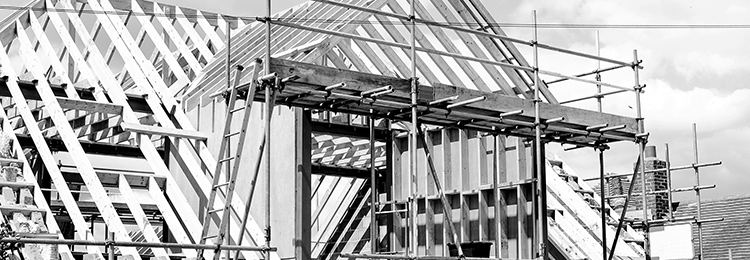There are many differences between new construction and typical remodeling jobs. With new construction, you must consider risks to your workers and job-site visitors. But with remodeling, it is possible that your customers may be living in the home at the time of renovation, which poses a host of differentiating hazards. These unique risks call for new considerations to be made in your risk management strategy.
Commit to a safe environment.
You, your subcontractors, and your customers all play a role in safety. Don’t simply work around the customer; you must set expectations for what customers should do to steer clear of hazards. Do this by talking them through the risks (electrical, fall, vehicle, etc.) that renovations pose and how you plan to mitigate them. Most customers have no clue how safety programs protect them. Discuss the systems you will put in place in order to ensure protection. While you can’t guarantee absolute safety, your commitment to a safe environment and the safety precautions you take will lower the possibility of an accident.
Develop safe job-site habits.
In order to provide a safe environment for customers who occupy their homes during a renovation, it’s important to implement certain safety systems. Here are five habits you should adopt:
- Always use OSHA-compliant ramps or stairs instead of walkboards or planks for entrance or egress. Ramp and stair access ways should have handrails as a best practice. Inclines greater than 30 inches require handrails as well.
- Install temporary rails on any unprotected openings such as window openings, open-sided stairs, or landings. It’s imperative not to overlook this, especially during the drywall stage.
- Protect any open trenches with orange safety fencing, guardrails, or other barricades. On a similar note, provide signage and fencing or barricades to create a construction perimeter to keep unwanted visitors out and construction materials, machinery, and equipment in.
- Be vigilant in protecting workers and customers from falling objects, especially if your project involves scaffolding. Use caution tape to create a perimeter around the scaffolding to discourage customers from walking underneath it.
- Maintain good housekeeping. Mandate a daily cleanup and keep an on-site dumpster so that the customers won’t be subjected to the hazards of tools, cords, exposed nails, and scrap. This shows respect as well as respectable risk management techniques.
Talk about your hiring practices.
Customers will feel a lot more comfortable with having strangers working in their homes if you discuss how you and your subcontractors run criminal background checks as a part of your pre-employment screening process. It is also critical to reinforce this message with your subcontractors. This can be done by detailing your expectations in your subcontractor agreements. With COVID still a concern, reassure customers of your COVID-specific safety practices including distancing, wearing masks and hand-washing.
Get it in writing.
After discussing your risk management system with the customer, make sure to document your commitment to a safe environment. Draft a formal proposal with the project timeline and quote as well as your safety program. After the contract is signed, don’t surprise the customer with any deviations from the original remodel plans. Provide customers with a sample change order and explain how any requested changes will impact the original timeline and quote.
Consider a clause within the contract that states the GC will walk the homeowner through the job-site weekly. This will ward off unexpected visits from the client and help to protect them from job-site dangers. For good measure, block off areas under construction on the weekends and evenings, remove tools and equipment and lower scaffolding walkboards if they remain erected.
Don’t forget insurance.
You need much more than just a written safety policy. You should also have a Builders Mutual Builders Risk policy, especially if you specialize in remodels and cosmetic upgrades as opposed to structural overhauls. And if you primarily provide more extensive renovation work, further underwriting will be necessary. Trade contractors looking to save on differences in premiums may also opt for an Installation policy instead. Regardless of your business plan, your Builders Mutual agent can help you find the right coverage.
It is imperative to identify further risks to customers and to package your proposals with a consumer-conscious safety strategy, especially when homes are still occupied during renovation. These tips will aid in ensuring a secure environment for not only your customers but also you and your workers.
Content reviewed and updated 10-2021.




 Find an
Find an